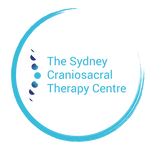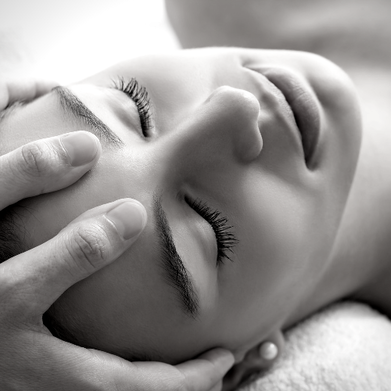|
JOIN OUR
MAILING LIST
|
|
TMJ stands for the temporomandibular joint, which connects the lower jaw (mandible) to the temporal bones of the skull.
The TM joint is one of the most used joints in the body, as we use it at least 2000 times a day when we speak, chew, swallow, yawn, kiss or snore and it has a biting power of 70 kg. A variety of cranial nerves synchronises all of the above activities and it is because of its physiology that this complex structure acts differently than other joints in the body. The TM joint and the powerful muscles attached to it are directly linked to the central nervous system and the whole craniosacral system. For a long time TMJ was considered to be a dental problem but it is now widely regarded as a multifactorial condition. Wearing a splint can provide relief for TMJ symptoms like headaches and protect the teeth but it does not address any underlying causes. In addressing TMJ issues, clenching, grinding, whiplash, slips and falls, braces, stress, trauma, emotional factors, structural imbalances and integration of all structures – upper jaw, lower jaw, surrounding muscles, temporal bones and cranium needs to be taken into account, including whole body strains. A few specialists have now upgraded the name from TMJ to the Cranio Mandibular joint and some are working with cranially trained osteopaths and craniosacral therapist to achieve whole body integration. (Dr. Wojciech Tarnowski). TMJ Syndrome or TMJD - Temporomandibular joint Disorder – can range from mildly annoying to a highly debilitating condition which can manifest itself not only in the classic symptoms of jaw and facial pain, but also in:
Causes TMJ dysfunction can be caused by a derangement of the actual disk or arthritis but what is often not addressed effectively, is that many persistent issues and jaw problems arise as a result of stress, manifesting for example as teeth grinding, muscle spasm or as a variety of other forms of TMJ Syndrome. TMJ syndrome is usually a symptom not a cause. 90% of cases are not primary temporomandibular joint disturbances ((Upledger, 1987, Beyond the Dura). They are usually a result of craniosacral system dysfunction: temporal bone, hard palate, intra-oral imbalances, fascial restrictions and/or due to stress factors like poor posture or emotional tension. How Does Craniosacral Treat TMJ? Cranio addresses the whole person not just a body part, i.e. Cranio looks at the interconnected of the systems in the body. The TMJ’s have many interrelationships with the whole body, so treating TMJ issues may involve work on other parts of the body as well. Practically this means that Cranio releases and integrates all surrounding structures: upper and lower jaw, the jaw (masseter) muscle, temporal bones, upper cervical (neck) vertebrae and the whole cranium. Cranio looks at postural imbalances like hip problems or forward head posture but also addresses craniosacral imbalances in other areas that may have ricochet up to the TMJ’s. Stress and emotional states do play a big role in TMJ issues and here Cranio addresses the emotional states first as it causes a deregulation in the nervous system and no amount of mechanical treatment will otherwise completely resolve the problem. Five easy things you can do at home to start alleviating TMJ issues: Depending on the cause of your TMJ disorder, different self-care strategies work really well.
Some random facts that might just make you win that Trivia Quiz one day:
Conclusion Because of the jaw’s unique physiology, it’s important to treat the root cause of your pain as soon as possible. As a practitioner, what I love about treating TMJ patients is that clients respond really well. Some find immediate relief if acute and some find gradual overall relief if more chronic, with regular and consistent treatment. “Craniosacral Therapy has the potential for being the most effective holistic therapy of all for TMJ by restoring homeostasis”. (Dr. Wojciech Tarnowski - Dentist). Here are some comments clients have texted me after their appointment. “Thank you Dorine. Amelia felt amazingly relaxed and released after last session”. (Amelia - 9 years old) “Today was amazing, thank you so much. I can almost get two knuckles in! Feeling very positive about this and looking fwd to seeing our progress. Thanks again”. (DM) “Thank you very much for yesterday. I am feeling a lot better today! My muscles in my jaw/cheeks are a lot more relaxed, my neck feels less tense and I have had minimal headaches today”. (JF) References Thomas Attalee D.O., R.C.S.T (2016)– Face to face with the face Dr Upledger, J. (1987) – Beyond the Dura Dr. Wojciech Tarnowski – The biomechanics of Dentistry – Fulcrum – issue 65 - 2015
2 Comments
12/18/2023 02:25:48 am
Thanks for sharing such a great information.. It really helpful to me..I always search to read the quality content and finally i found this in you post. keep it up!
Reply
12/18/2023 02:38:12 am
The TMJ’s have many interrelationships with the whole body, so treating TMJ issues may involve work on other parts of the body as well. Thank you for sharing your great post!
Reply
Leave a Reply. |
AuthorDorine Siccama.com Archives
August 2023
Categories |


 RSS Feed
RSS Feed